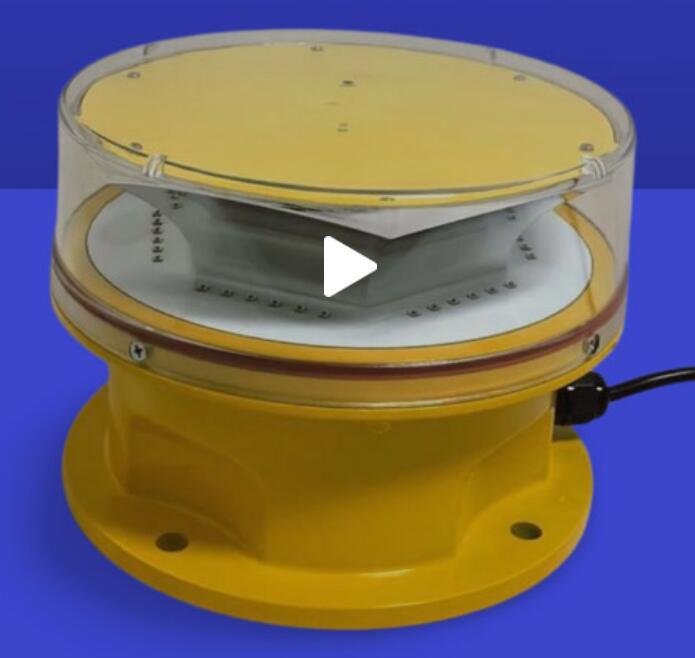Red Obstruction Lights: The Critical Guardians of Low-Altitude Airspace
Introduction to Aviation's Vital Warning System
Red obstruction lights serve as the universal language of danger in aviation, marking hazardous structures that could endanger low-flying aircraft. These specialized warning systems have evolved from simple incandescent bulbs to sophisticated LED arrays, becoming more visible, reliable, and energy-efficient while maintaining their distinctive crimson hue that pilots instinctively recognize as a warning.
Technical Specifications and Performance Standards
Light Intensity Classifications
L-810 (Low Intensity): 32-100 candela for structures under 150 feet
L-864 (Medium Intensity): 2,000 candela for structures 150-500 feet

Dual/Multi-Light Systems: Combined configurations for complex structures
Operational Parameters
360° horizontal coverage with 3°-10° vertical beam spread
Steady-burn or flashing patterns (40-60 flashes/minute)
| red obstruction light |
FAA-compliant chromaticity coordinates (x=0.690, y=0.310)
Modern LED Advancements in Red Lighting
Next-Generation LED Benefits
80% energy reduction versus traditional fixtures
50,000+ hour lifespan with minimal lumen depreciation
Instant cold-weather start capability (-40°F operation)
| red obstruction lights |
Integrated photocells for automatic dusk-to-dawn operation
Smart System Integration
Remote monitoring via cellular/satellite links
Predictive maintenance alerts
Automated fault reporting systems
Synchronization across multiple units
Regulatory Compliance Framework
Global Standards
FAA AC 70/7460-1L: US obstruction marking requirements
ICAO Annex 14: International civil aviation standards
ENAC (Italy) & CASA (Australia): Regional variations
Height-Based Requirements
<45m: Low-intensity red lights
45-150m: Medium-intensity red lights
>150m: High-intensity white strobes with red night lights
Specialized Applications Beyond Towers
1. Wind Energy Installations
Ice-resistant housings for turbine nacelles
Synchronized flash patterns across wind farms
Radar-compatible designs
2. Urban Infrastructure
Architecturally sensitive installations
Light pollution mitigation features
Custom mounting solutions for bridges
3. Offshore Platforms
Marine-grade corrosion protection
Helicopter landing zone markings
Submersible-rated emergency lights
Installation Best Practices
Structural Considerations
Load analysis for mounting hardware
Vibration resistance for tall structures
Lightning protection integration
Optical Positioning
Unobstructed 360° visibility
Vertical spacing on tapered structures
Elimination of "dead zones"
Maintenance Protocols
Quarterly photometric verification
Annual component inspection
5-year comprehensive system review
Emerging Technologies in Obstruction Lighting
1. Adaptive Visibility Systems
Automatic intensity adjustment for weather conditions
Aircraft proximity-activated lighting
Haze-penetrating wavelength optimization
2. Sustainable Solutions
Solar-hybrid power systems
Energy-harvesting technologies
Recyclable material construction
3. Drone Era Adaptations
UAV-specific detection systems
ADS-B integration
Anti-collision light synchronization
The Science Behind Red's Effectiveness
Human Factors Engineering
Optimal color wavelength for dark adaptation (620-750nm)
Contrast performance against urban light pollution
Recognition speed in pilot visual scanning
Atmospheric Performance
Reduced scattering compared to shorter wavelengths
Superior penetration of rain/fog
Minimal impact on night vision
Conclusion: The Future of Hazard Marking
Red obstruction lights remain indispensable in aviation safety, evolving from simple warning devices to intelligent safety systems. As urban air mobility and drone traffic expand, these lights will play an even greater role in protecting increasingly crowded airspace. Their distinctive red glow - now enhanced by LED technology and smart monitoring - continues to prevent accidents and save lives worldwide.
For aviation authorities, engineers, and infrastructure operators, investing in compliant, high-performance red obstruction lights represents both a regulatory obligation and a moral imperative. In the complex three-dimensional highways of modern aviation, these crimson sentinels stand watch, ensuring safe passage for all who take to the skies.
